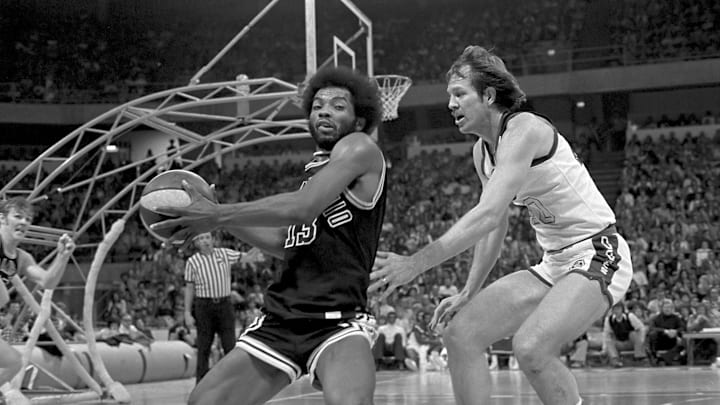The history of the San Antonio Spurs starts in 1966 at a fine dining establishment in downtown Dallas. In the Chapperal Club on the 37th floor of the Sheraton Dallas Hotel, a group of businessmen decide to make one of the strangest investment choices ever.
This group of men had an estimated net worth of six billion dollars, making them some of the richest men in Texas. Texas was, at the time, one of the wealthiest states in the union, and these men were at the center of it all. They decided a great way to spend their hard-earned money was by investing in the American Basketball Association, a jumpstart professional league that looked to rival the long-standing NBA.
Most team owners make the team they own their top priority for appearance's sake. These men instead had a totally different approach, thinking, “what if we did the absolute bare minimum required to run this franchise?”
The result? The most successful professional sports team in American history.
The Beginning of the Dallas Chaparrals
The Dallas Chaparrals did not start off in a conventional sense. Their name comes from a west coast shrubby ecosystem, and their first coach was Hall of Fame player Cliff Hagen, who, after a ten-season career with the St. Louis Hawks of the NBA, played and acted as head coach for the Chaparrals from 1967-1970.
That first Dallas team had five players who averaged 15 points a game and finished second in the Western Conference. Coach Hagen was an above-average player and was the first man to ever play in both the ABA and NBA All-Star games.
With a name, a star, and multiple home stadiums, it looked like the Chaps would be a fixture of American basketball for a long time. Sure, ownership was reluctant to sign anyone to a long-term contract of any sort, and sure, they never had a permanent home, but they started their existence with three winning seasons in a row. Despite no appearances in the ABA Championship, everything looked good for the haphazardly thrown-together franchise.
The Chaparrals played in two coliseums, an auditorium, and a convention center. For a team with four homes, a combined capacity of 41,293 is rather pathetic. That’s twice the size of the Alamodome, but it took four stadiums to reach that number.
